Abstract
Two remarkable finds new to vc97 Westerness were made at Corrour this year. Baldellia ranunculoides (Lesser Water-plantain) subsp. repens was discovered flowering widely in Loch Ossian, Loch Guilbin and the River Ossian, whilst Illecebrum verticillatum (Coral Necklace) was found in huge abundance in the drawdown zone of Loch Treig. The significance of these new finds and possible explanations for them are considered.There were plenty of good finds in Westerness in 2021, but two remarkable discoveries stand out, both associated with freshwater lochs at Corrour.
Loch Ossian
At the end of July, IS received a photo from a neighbour of a puzzling plant with three large pink petals, seen on the edge of Loch Ossian. It proved to be Baldellia ranunculoides (Lesser Water-plantain) subsp. repens, the first record for Westerness. Further investigation by SW and RM (using a canoe) showed it to be widespread around the loch, though more frequent on the northern shore. Additional sites were found downstream in the River Ossian and Loch Guilbin (Fig. 1).
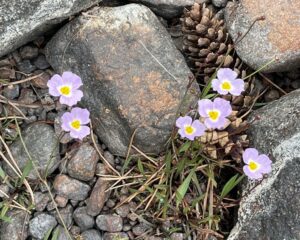
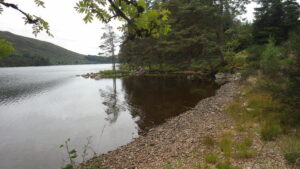
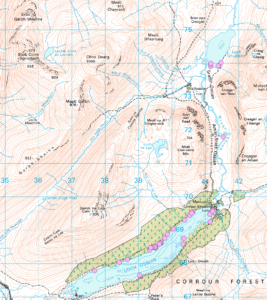
In Westerness B. ranunculoides was previously known from just two small mesotrophic lochans in west Ardnamurchan, as subsp. ranunculoides. The two subspecies differ in various respects (Jones, 2015) and have different lifestyles and habitats. Indeed, continental workers who looked at their genetics concluded that they should be elevated to species (Arrigo et al 2011). The updated Vascular Plant Red List for Great Britain (see BSBI, 2021) also lists them as separate species, with ‘Vulnerable’ status for B. repens and ‘Near Threatened’ status for B. ranunculoides. Both are also of conservation concern in Europe (Jones, 2015).
While ssp. ranunculoides appears to live in water bodies with relatively stable shallow water levels and flowers regularly, ssp. repens can live in water to depths of at least 3 m and only flowers when the water levels are low enough to expose it, such as in the dry summers of 2018 and 2021. The flowers of ssp. ranunculoides are self-fertile, unlike those of ssp. repens, which are also larger with overlapping petals. Another significant difference is that, unlike ssp. ranunculoides, ssp. repens spreads vegetatively by runners and can form large patches many metres across. These differences are well illustrated in a pdf at https://bsbi.org/wp-content/uploads/dlm_uploads/Baldellia_ranunculoides_subspecies.pdf .
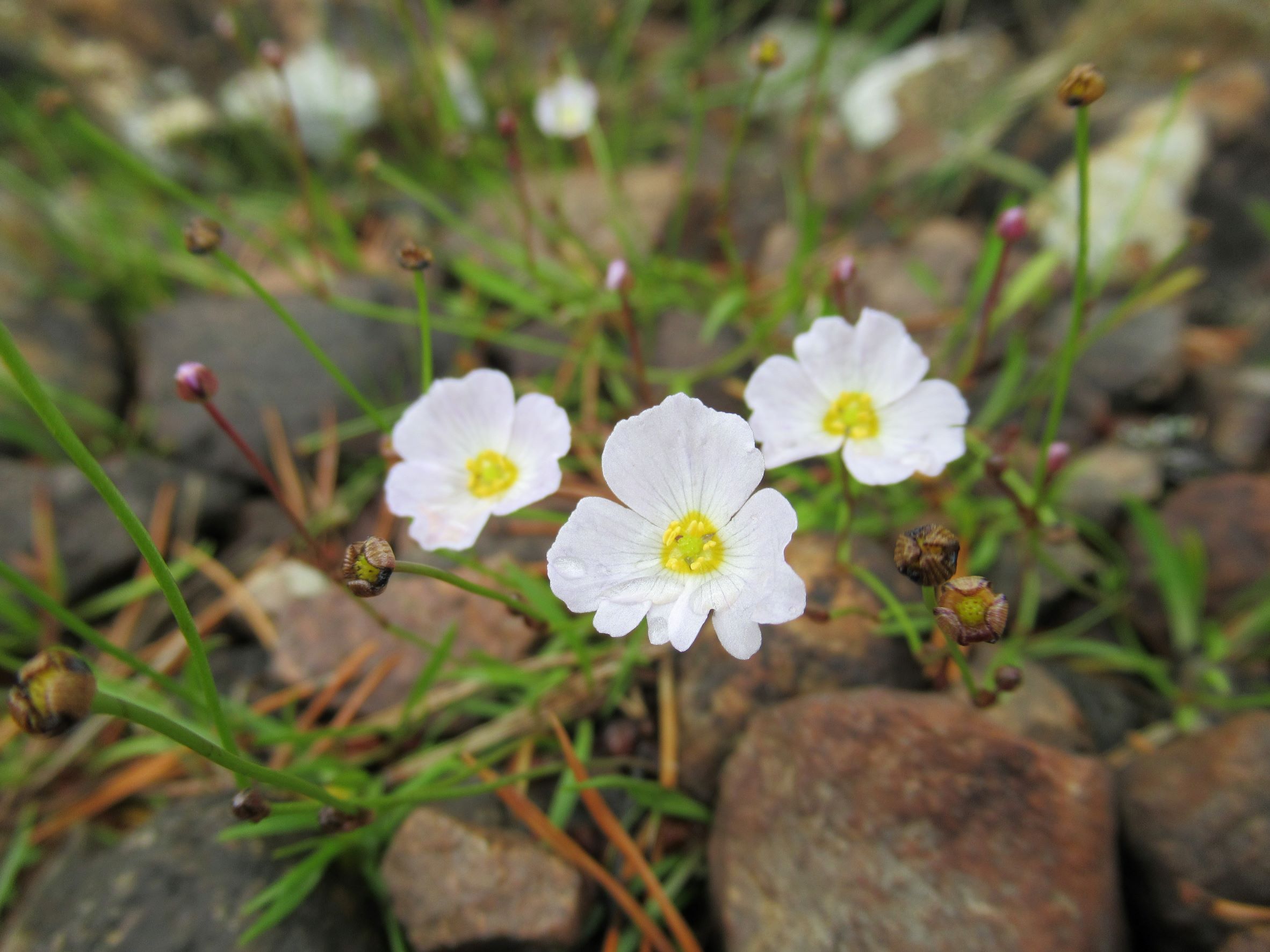
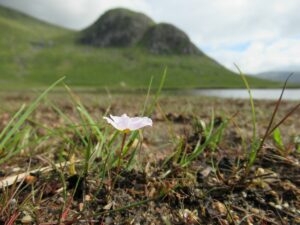
The distribution of ssp. repens is uncertain as many populations of Baldellia ranunculoides have not been determined to subspecies. Until now it was only known in Scotland from Loch Tay and two other oligotrophic lochs nearby. Known sites in England and Wales are very few, though it may be more frequent in Ireland. Ssp. ranunculoides seems to prefer more mesotrophic conditions.
It is surprising that this taxon had not been recorded at Corrour previously, considering how widespread it is there, but when not flowering it could easily be missed, or perhaps mistaken for Lesser Spearwort Ranunculus flammula, which is common in the stony margins of oligotrophic lochs such as Loch Ossian. A key vegetative identification feature of Baldellia is the distinctive coriander smell of crushed leaves. It seems quite possible that further sites await discovery.
Loch Treig
But the excitement was not over! In September SW received a photo from the estate stalker of another new plant, this time from Loch Treig, a large reservoir just 5 km to the west of Loch Ossian. It was Illecebrum verticillatum (Coral Necklace) far beyond its known distribution. SW discovered it to be hugely abundant at the southern end on sandy subtrates in the drawdown zone, and IS found it to be plentiful at the northern end near the dam. Loch Treig forms part of the huge hydroelectric system constructed for aluminium production in Lochaber in the 1930s, and this summer the water was as low as anyone can remember, seemingly providing ideal conditions for this species.
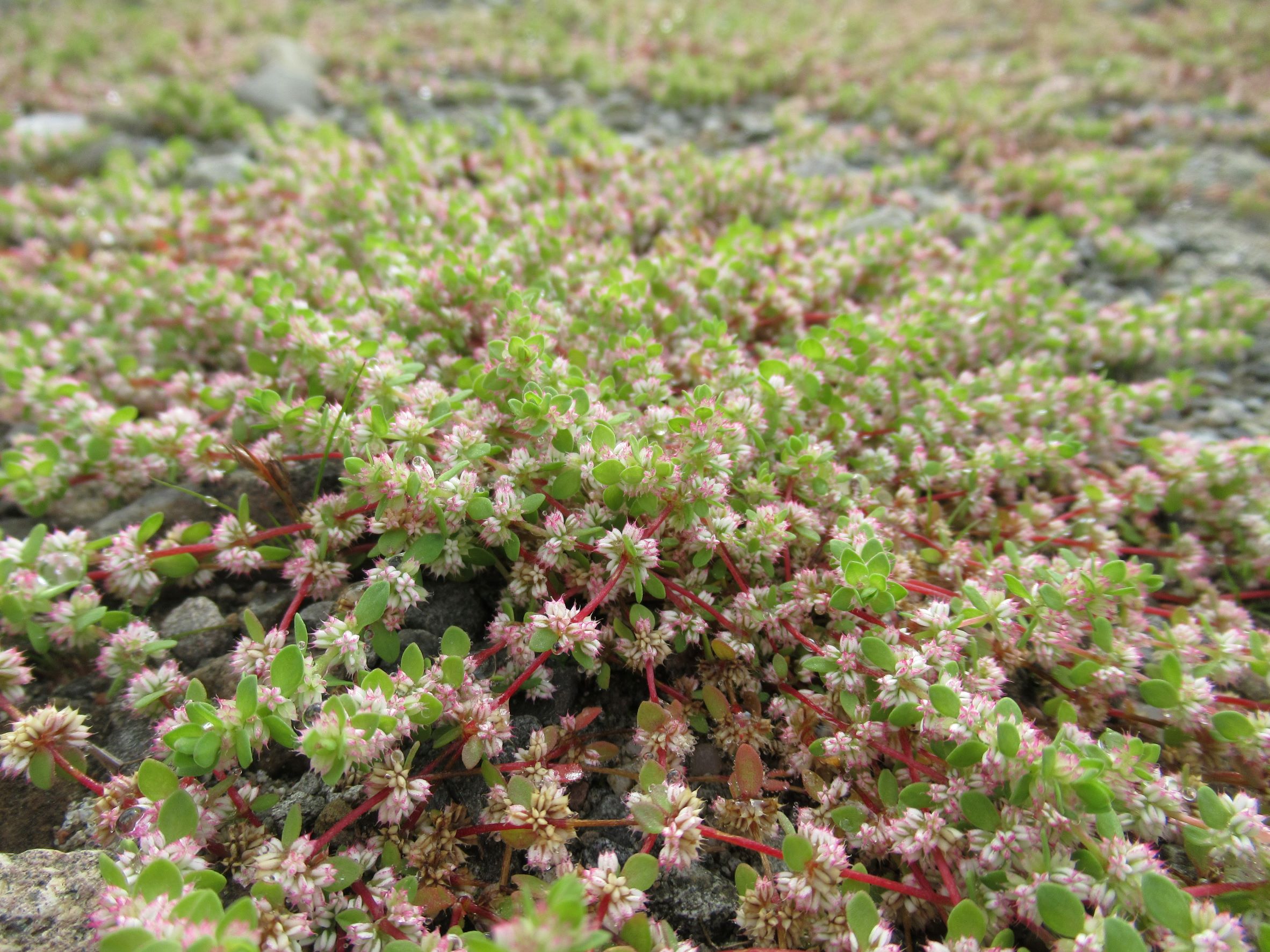
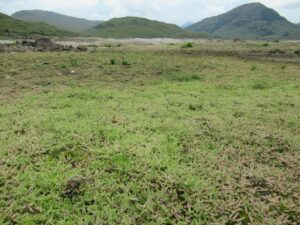
Illecebrum verticillatum is a Nationally Scarce annual of seasonally wet sand and gravel. Pearman (2008) considered its native range to be restricted to Cornwall although it is long-established in the New Forest with records from various other southern counties. There are also a few casual records further north in England, mainly associated with railways. How it came to be in Loch Treig is a mystery. The West Highland Railway runs alongside Loch Treig and may be a possible source of the plant, although the nearest recent records are hundreds of miles away. Other possibilities include forestry, or works associated with hydroelectricity. In Scotland there are records from the early 20th century from Barra and Eriskay, although these records have been questioned (Pankhurst & Mullin, 1991). Curiously, sub-fossil pollen has been found on Eriskay, radiocarbon-dated as prior to 4620 years BP (Whittington & Edwards, 2000), further adding to the mystery.
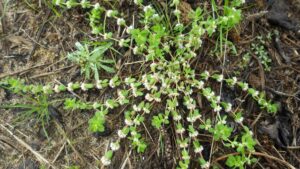
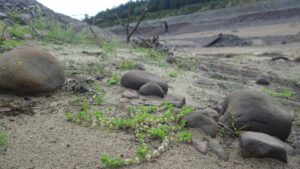
A small stand of the Nationally Scarce species Juncus filiformis (Thread Rush) was also found growing with Illecebrum at the northern end of the reservoir, the first record for Loch Treig, This has no doubt colonized from the nearby Laggan reservoir on the River Spean, from which water is piped into Loch Treig. IS first recorded this rush in the Laggan reservoir in 2007, since when it has spread rapidly there, and in 2021 was found to be dominant or abundant over many hectares of the exposed reservoir bed. This species is thought to be spread by migratory waterfowl, which is perhaps another possibility for Illecebrum.
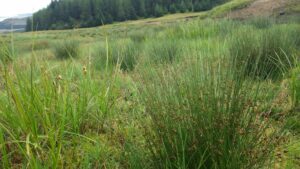
[All images by Sarah Watts and Ian Strachan except where stated.]
References
Arrigo,N., Buerki,S., Sarr, A.,Guadagnuolo, R. & Kozlowski, G. 2011. Phylogenetics and phylogeography of the monocot genus Baldellia (Alismataceae): Mediterranean refugia, suture zones and implications for conservation. Molecular Phylogenetics and Evolution 58: 33-42.
BSBI (2021) Updated Vascular Plant Red Data List for Great Britain. Online at https://bsbi.org/taxon-lists.
Jones,R.A. 2015. Baldellia ranunculoides (Lesser Water-plantain) ssp.ranunculoides & ssp repens. BSBI News 129 : 4-5.
Pankhurst, R.J. & Mullin, J.M. 1991. Flora of the Outer Hebrides. Natural History Museum Publications.
Pearman, D.A. 2008. The status of Coral-necklace Illecebrum verticillatum L. (Caryophyllaceae) in Great Britain. Watsonia 27: 143-148.
Whittington, G. & Edwards, K.J., 2000. Illecebrum verticillatum L. in the outer Hebrides. Botanical Journal of Scotland, 52(1): 101-104.